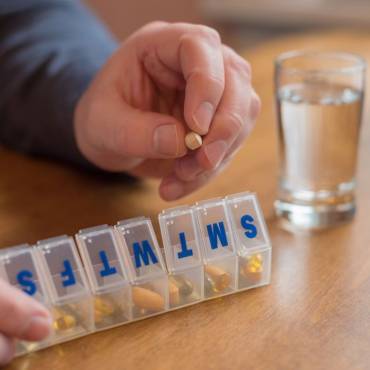Protein is essential for building and maintaining muscle, healing tissue, and supporting a healthy immune system. How to increase protein intake: With this blog, you can discover a list of protein foods that help increase your daily protein intake and support your body’s health.
How to increase protein intake?
Protein is essential for growth, tissue repair, and maintenance of skin, nails, hair, and tissue. During low appetite or stressful situations, your body may require increased protein from your foods to preserve your muscle and lean body mass. However, protein isn’t the only nutrient to consume; carbohydrates and fats are also important for energy, so the protein you consume can be utilized for muscle and strength. Essentially, obtaining adequate nutrition can help a person fight off diseases and promote a healthy body. Everything from vitamins to minerals and proteins is required in specific amounts to perform all bodily functions properly.
Proteins are the body-building elements that are required for the development of muscles. Proteins are the main elements that facilitate the development of nails, muscles, and healthy skin and promote hair growth. But, if a child or a person’s diet lacks proteins, they will have to face various difficulties, which can lead to serious medical conditions. In children, protein is very necessary from the date of their birth because if a child lacks protein, then they may face serious health complications such as:
-
- Marasmus
This health condition is common among young children and infants due to insufficient protein. Marasmus is a severe lack of important nutrients in the body. Looking frail, thin, weight loss, and dehydration are some of the symptoms that a person affected by marasmus suffers from.
-
- Kwashiorkor
A severe protein deficiency, even when carbohydrate intake is adequate, can lead to Kwashiorkor, a health condition often observed in children whose diets consist mainly of starchy foods, such as yams, rice, and bananas. A severe protein deficiency contributes to fluid retention in tissues, distinguishing Kwashiorkor from other forms of malnutrition. Individuals suffering from Kwashiorkor may look extremely thin and weak in their limbs but have swollen hands, feet, face, and belly. The swollen abdomen typical of Kwashiorkor can be misunderstood in individuals who are critically malnourished. Other symptoms of Kwashiorkor are brittle hair, loss of enlarged liver, dermatitis, loss of appetite, dehydration, irritability, fatigue, and stunted growth in children.
-
- Marasmus
This health condition is common among young children and infants due to insufficient protein. Marasmus is a severe lack of important nutrients in the body. Looking frail, thin, weight loss, and dehydration are some of the symptoms that a person affected by marasmus suffers from.
-
- Kwashiorkor
A severe protein deficiency, even when carbohydrate intake is adequate, can lead to Kwashiorkor, a health condition often observed in children whose diets consist mainly of starchy foods, such as yams, rice, and bananas. A severe protein deficiency contributes to fluid retention in tissues, distinguishing Kwashiorkor from other forms of malnutrition. Individuals suffering from Kwashiorkor may look extremely thin and weak in their limbs but have swollen hands, feet, face, and belly. The swollen abdomen typical of Kwashiorkor can be misunderstood in individuals who are critically malnourished. Other symptoms of Kwashiorkor are brittle hair, loss of enlarged liver, dermatitis, loss of appetite, dehydration, irritability, fatigue, and stunted growth in children.
Healthy and safe protein intake
Adequate daily protein intake from eating food helps meet protein requirements and maintain overall health. The World Health Organization (WHO) sets the safe levels of daily protein intake. Here are the levels of safe protein intake for different populations.
The recommended dietary allowance for protein is 0.8 grams per kg of body weight or 3.6 grams per pound. This is expected to meet the protein requirements of 97.5% of the world’s healthy adult population. The recommended daily allowance (RDA) is the nutrient you need to meet your basic nutritional requirements. In other words, it can be said that the minimum amount of need is to protect yourself from getting sick. There is no specific amount you are supposed to consume every day. To calculate your daily consumption, multiply your body weight in pounds by 0.36.
For older adults, the recommended dose intake is 1 g per kg body weight, and it is recommended to group protein intake into a single main meal.
Physical activity: Individuals who engage in high levels of physical activity may require more protein, and the recommended daily allowance varies depending on the level of physical activity. For example, 0.8 grams per kg of body weight is a daily requirement for minimal physical activity; for those who indulge in moderate physical activity, 1.3 g per kg of body weight each day and 1.6 g per kg each day are required for intense physical activity.

What is the power of protein?
Protein is essential for a healthy diet and keeping the muscles strong. It also keeps your heart strong and boosts your immune system to keep you from getting sick. You may only think of meat to get proteins, but this important nutrient has several forms. When choosing various protein-rich foods, you must pay attention to your fat and cholesterol intake, which are the keys to healthy eating and better nutrition. So, to increase your protein intake every day, below are various foods that may help you:
-
- Red meat
Red meat, including beef, pork, and lamb, is a rich source of protein. Some of these are highly loaded with cholesterol and saturated fat, which can contribute to plaque buildup, which can clog arteries, increasing the risk of heart disease.
The body needs protein, but not all protein-rich foods are good for you. You need to reduce your intake of sources of protein that contain unhealthy factors, such as saturated fat (a type of unhealthy fat) and cholesterol. You may sometimes exceed your daily fat allowance with just a few bites.
So, try pick lean meat products like round and loin (sirloin, tenderloin, and top round) and ground beef with 5% or less fat. Furthermore, if you have meat, you always prefer moderate portion sizes because a 3-ounce serving of meat (the size of a deck of cards) has about 21 grams of protein, which is enough for a single time.
-
- Dairy
Dairy products contain muscle-building protein, which may help lower blood pressure and reduce your risk of diabetes. A cup of skimmed milk contains 8 grams of protein. Furthermore, if you want a diet, try a cup of fat-free Greek yogurt with 18 – 20 grams of protein, double the amount of traditional yogurt.
-
- Poultry and eggs
Lean protein products include poultry like skinless chicken breasts and turkey cutlets. You can have a 3-ounce chicken breast in your meal to provide 31 grams of protein, whereas an egg has 6 grams of protein. These foods are considered one of the best and healthiest ways to maximize protein intake. Experts have also recommended that having an egg a day doesn’t raise the chances of heart disease in healthy people. Moreover, it is a matter of concern if people have heart disease, high cholesterol, or diabetes.
-
- Seafood
Seafood, a great protein source, is low in saturated fat and high in omega-3 fatty acids, nutrients that protect your heart. You can have salmon steak, which contains 17 grams of protein and is a good source of protein. Moreover, other high-protein seafood includes tuna, sardines, and trout. Try to have 4 ounces of seafood twice a week to get the maximum protein intake per day.
-
- Soybeans
For those who are vegetarians, then soybeans are the best natural protein source. You can have beans (edamame), use soy paste (miso) in sauces and soups, or drink soy milk to fulfill the daily protein intake. You will be surprised that a cup of cooked edamame is enriched with 29 grams of protein, more than a steak. Moreover, a cup of soy milk has much more protein than regular milk.
-
- Lentils
Lentils are very good sources of fiber, iron, and protein. A cup of lentil is packed with 15 grams of fiber and around 6.6 mg of iron, which helps you feel more satisfied with your meals in combination with the protein they contain. Moreover, a cooked cup of lentils contains 18 grams of protein. These are some of the best vegetarian foods that you can have.
-
- Quinoa
You can increase your protein intake by skipping regular breakfast foods like bagels, which are high in calories. Quinoa packs a protein punch, as a cooked cup contains 8g more protein than an egg. Try to have quinoa with skim milk, blueberries, walnuts, and a little maple syrup.
-
- Protein drinks
There are various protein sources if you are not getting enough from your food. It means that if you’re not getting enough protein from your diet, protein powders, bars, and supplements may help you. A lot of options are available to make protein drinks. You can make your own by blending fat-free Greek yogurt, soy, skim, and fruit. Add a tablespoon of peanut butter for a richer protein content. Doing this will help you provide your body with better nutrition and increased protein intake.
Keep in mind and be sure to only go with choices low in cholesterol and saturated fat because these may provide the exact protein intake and help you eliminate other health conditions.
You can consult a nutritionist to learn more about protein consumption and how to get more protein, especially if you are a sportsman or indulge in any sports activity.



